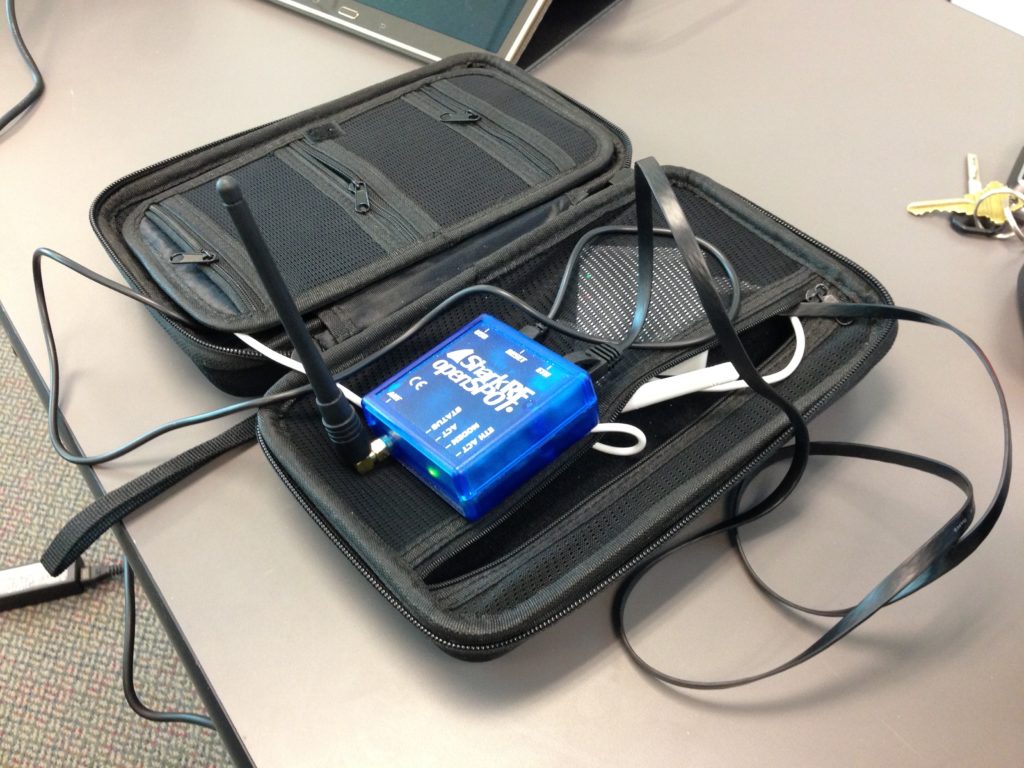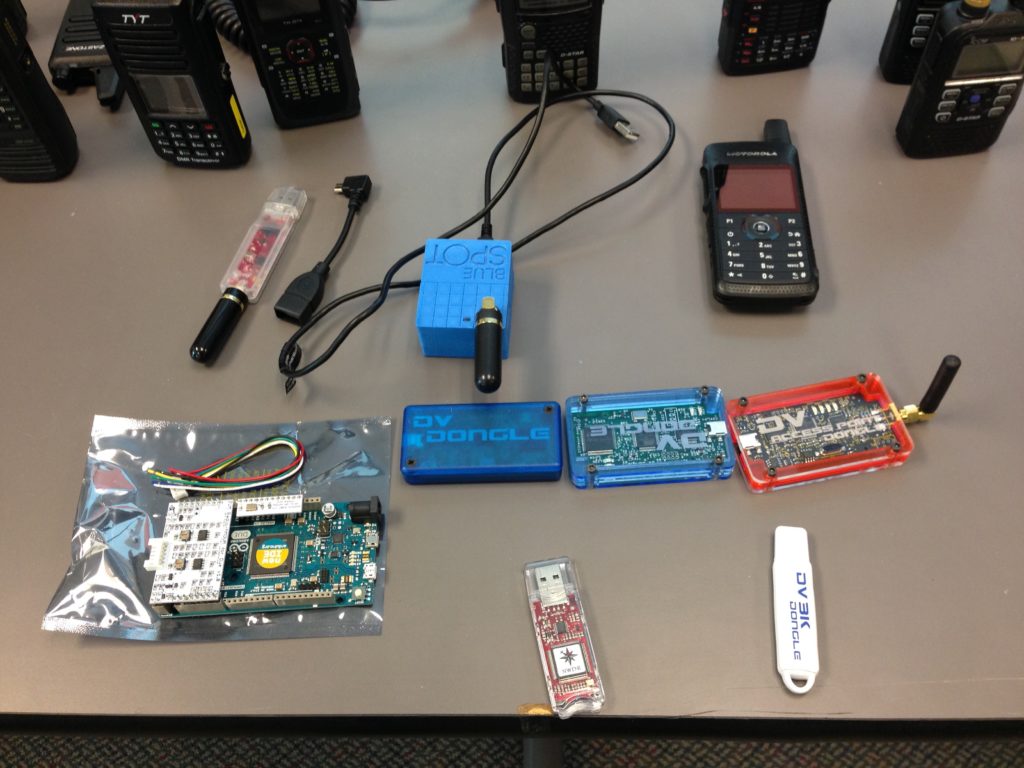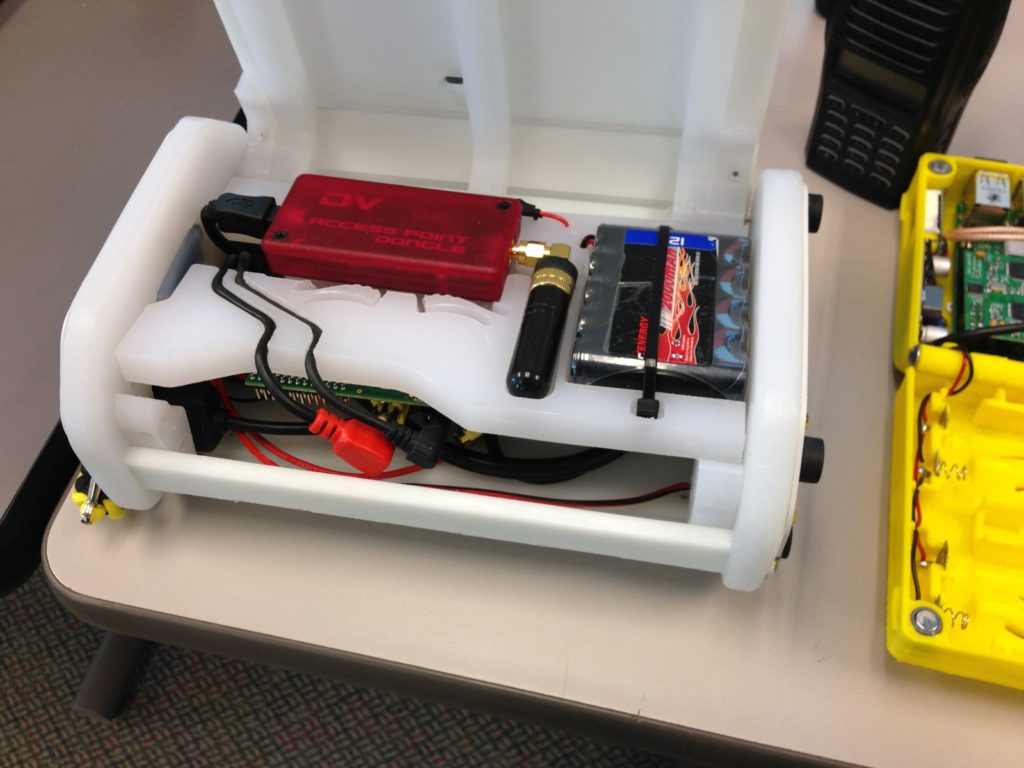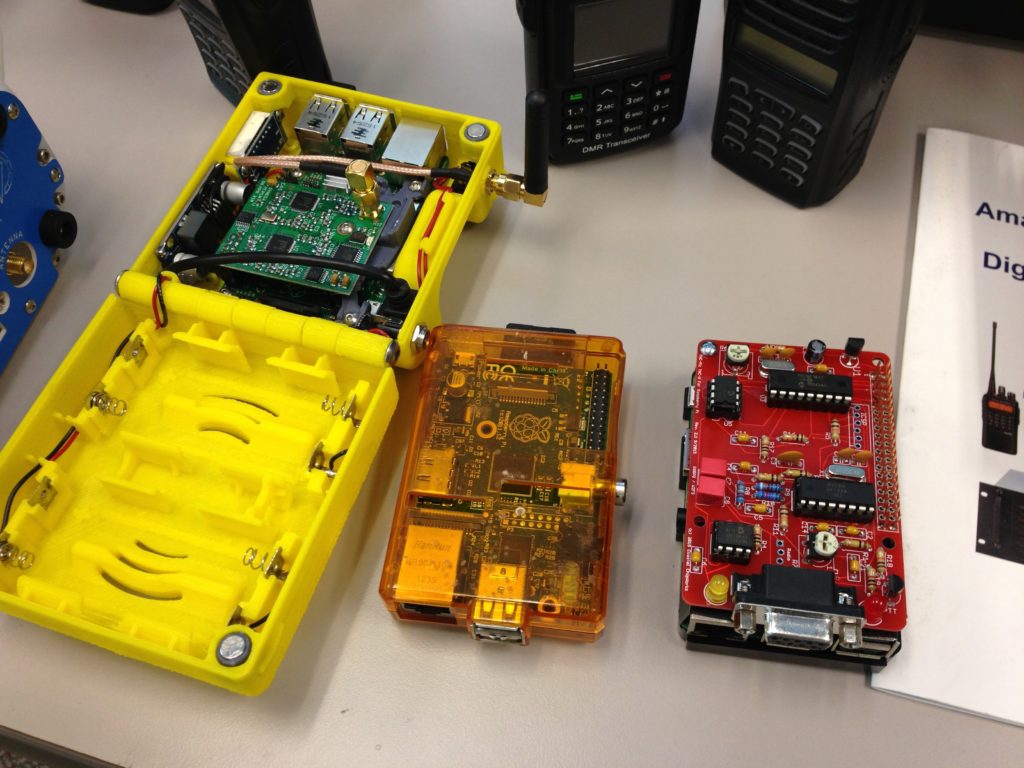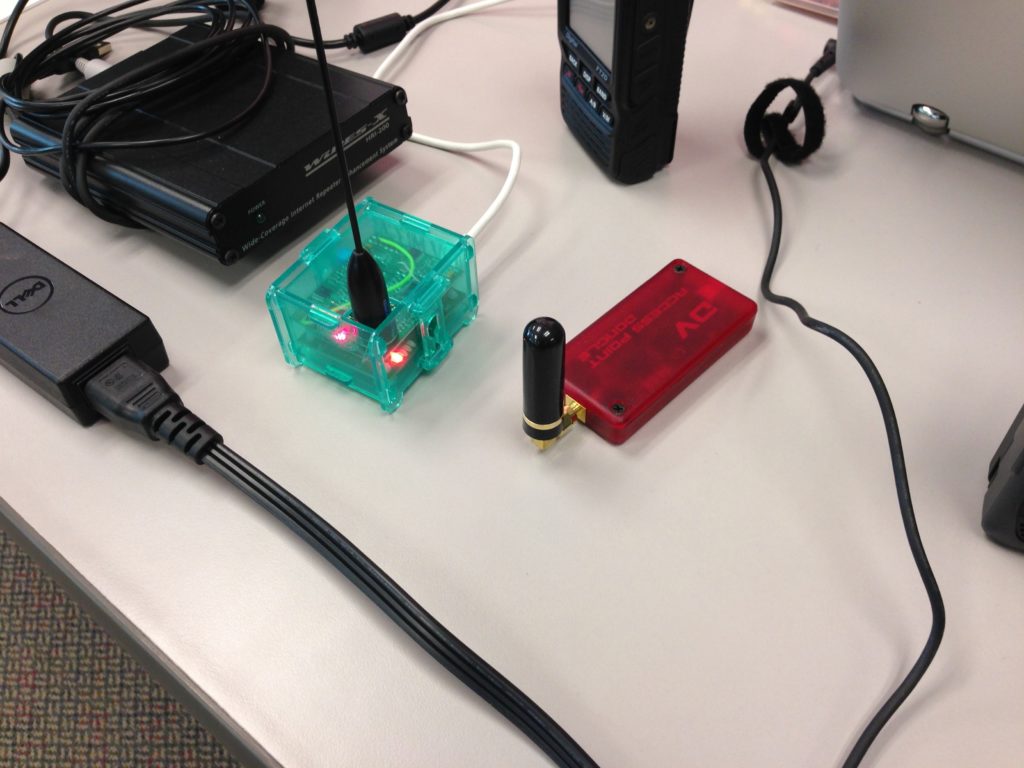BARC would like to thank Bill (WA7KMF) and Jeff (AC7JT) for their efforts in putting together an informative and enjoyable presentation. Thank you to all who attended the May 2017 BARC meeting. As you may know, this was the last regular club meeting until November. We now enter the busy summer season filled with various activities. If you have not already done so, we encourage you to sign up to participate in one or more activity. Field Day and the WIMU Hamfest are just around the corner. It’s a good idea to start preparing for those events now!
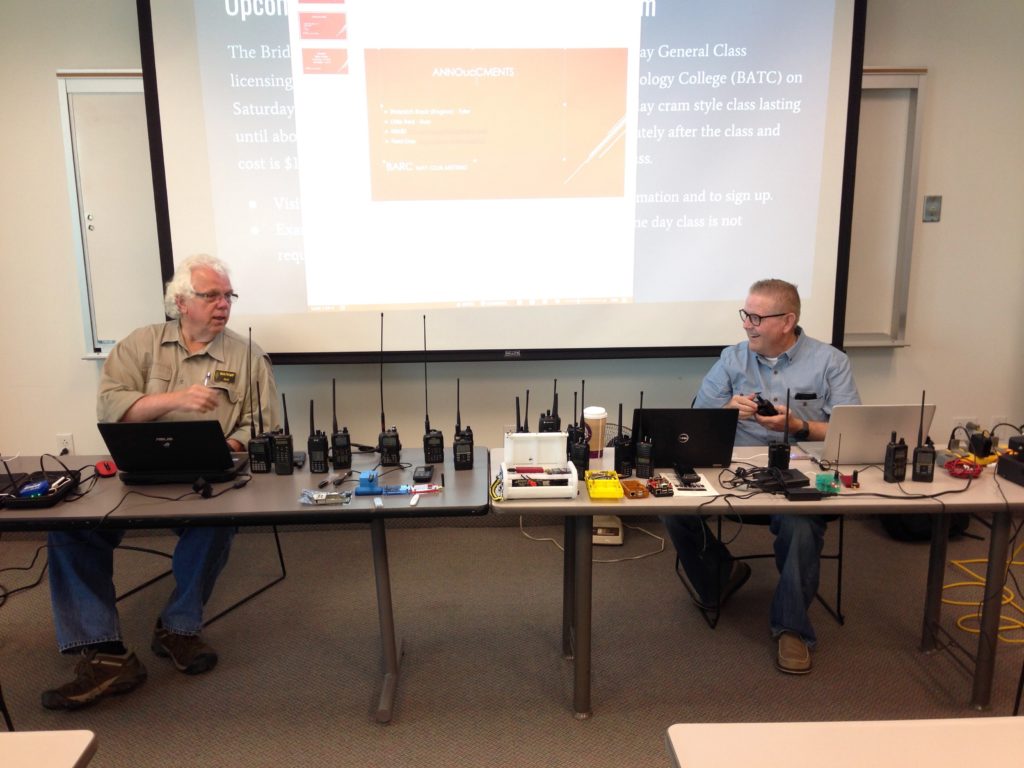
Bill (WA7KMF) and Jeff (AC7JT) presented on dongles, hotspots and radios for the digital ham. They brought with them an impressive array of digital equipment including at least a dozen digital capable HTs and probably every hotspot/dongle currently available on the market. Some of the equipment was “turn-key” commercial gear and there was a mix of home-brew as well.
Bill began by giving an overview of the various digital modes used by hams (D-STAR, DMR, P-25, C4FM, etc.). A few key points are that digital modes are generally more spectrum efficient, and data as well as voice can be combined in the same channel. Some neat features include text (SMS) messaging, location tracking and clearer audio (no static). Ted (AC7II) vouched for the audio clarity of digital vs. analog over a comparable distance. When these digital systems are linked to the internet you can talk all over the world (similar to IRLP and EchoLink on analog FM).
We learned some new terminology such as talk groups, reflectors, R2D2 and dashboard. As with many aspects of the hobby there is a bit of a learning curve. The manner in which you configure your radio (and/or hotspot/dongle) to navigate the various networks is a bit different for each mode. Similarly, each mode has certain pros and cons associated with it (depending on your point of view).
Jeff covered the difference between dongles and hotspots pointing out that with a dongle, you don’t even need a radio. You can use a mic/headset with your PC to transmit and receive and the dongle handles the audio processing for the mode you wish to use. Hotspots have very low power transceivers in them and work sort of like a WiFi router for your radio. Both will enable you to connect to a “channel” of your choice and talk. However, a hotspot enables you to use your radio around the house without being tied to the computer.
There are many other advantages to these little devices. They work anywhere there is an internet connection, so you can take them with you when you travel. Many people “tether” them to their smartphone internet connection with enables use anywhere with cell coverage. With a dongle or hotspot you don’t need to worry if there are no compatible repeaters nearby. In addition, you don’t need to worry about tying up the repeater and you can go to any “channel” you wish.
The following hotspot products were demonstrated:
It is worth noting that we do have multiple digital repeaters available to us in the valley. There are D-STAR, DMR, and System Fusion repeaters on the air. Although the System Fusion machine is not yet configured for using digital.
Jeff provided his opinion to those who are new to digital and looking to get started without a large investment. He stated that DMR would be the best option due to the availability of low cost radios. You can purchase a DMR HT and an entry level hot spot for just under $250.
If you have additional questions or need help getting up and running on digital, please join us for our next Elmer Night which for this month will be on Tuesday the 16th @ 6:30PM in the same location as the meeting.
Media
